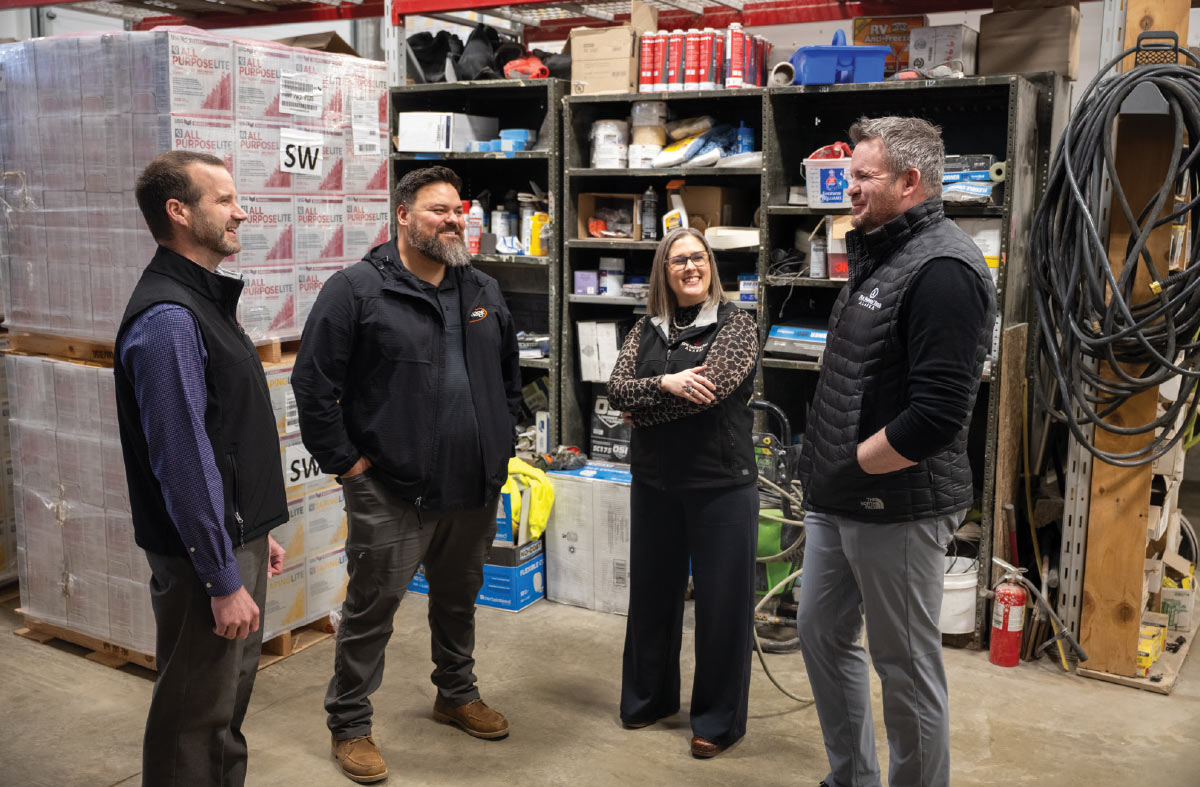
ike a hothouse flower sprouting under glass while the garden is still frosty, small businesses seeking capital for growth have a place to prepare before enduring the storm of a loan application. The Alaska Small Business Development Center (SBDC) puts owners through their paces without the stress of money on the line.
Misty O’Connor is director of SBDC’s office in Wasilla. “A lot of times I sit in those first meetings with the lender and my client, and I am the ‘bad cop,’” she explains. “I know the tough questions to ask, and I’m not shy to ask them for the sake of the business owner. Can the owner pay the loan off early? What are the fees? What’s the closing cost? What’s the entrance?”
O’Connor encourages owners to start at the SBDC, where advisors can help them without impacting their credit scores. “The lender’s going to say, ‘Let’s pull your credit so I can see what kind of loan I can give you.’ And every time a credit score is pulled, the score tanks,” she explains. “When we’re working with a lender, they don’t pull a credit score on our client until we’re really certain that the loan application is going to pass the scrutiny of an underwriter.”
One thing lenders like to see is a plan for “what if,” says Junie Steinbeck, manager of the First National Bank Alaska branch in Kenai. She notes, “As a business owner, you’re excited, you want to go forward. But it’s important to anticipate what might happen: What if the economy drops? How soon until you’re going to see those increased revenues?”
Alaska’s approximately 75,000 small businesses help drive the state, providing employment and creating revenue. Figuring out how to pay for additional staff, inventory, or space can be daunting—but small business owners don’t have to navigate the waters of lending and borrowing alone.
With undulating tariffs and increases to the cost of goods, small businesses are seeking new funding to help weather economic turbulence. “They’re trying to hedge their bets, looking for financing for working capital; a lot of them are trying to increase their reserves in case their suppliers increase costs,” Bittner says.
Uncertainty in the US economy adds to challenges already facing small businesses. “We have the aging population in Alaska with the people that are staying, and then you have young people going away to school and not coming back,” points out Chris Brahney, sales and member experience senior vice president for Nuvision Credit Union.
Though Alaska’s population grew slightly from 2023 to 2024, topping 740,000, the state’s working-age population has been shrinking. According to the Alaska Department of Labor and Workforce Development, almost all population gains are happening around Alaska’s urban centers; in rural areas, which are seeing more population loss, new employees are hard to come by. Higher pay might entice them, but that heaps another financial consideration upon the strained shoulders of a small business owner.
In both the Matanuska-Susitna Borough and the Kenai Peninsula, housing and commercial construction are booming, especially housing for first-time home buyers. New construction is paving the way for small contractors to expand by hiring more staff and buying new equipment.
In addition to loan requests for equipment purchases, Brahney is also seeing a rise in loans for commercial space.
First National and Northrim Bank offer a variety of options for small business owners. Both administer loans from the US Small Business Administration, which provides easier access to capital and reduced risk. Not every lender is approved for such loans, so business owners specifically looking into federal assistance should do their research or seek help from the SBDC as they explore their options.

First National Bank Alaska
Credit unions offer an alternative to banks, including loans that may come with lower lending rates. Furthermore, interest rates for deposits are typically higher than what banks can offer. Nuvision, in particular, has been building out its business-lending program in Alaska, expanding its lending products and support for small businesses.
“We see a huge growth opportunity in the Alaska market,” says Brahney. “We have a great group of small business advisors with fifteen to twenty-plus years of small business experience.”
Other types of lenders, like Alaska Growth Capital, operate under different rules and regulations than banks do, so they have more flexibility in loaning money, the amounts they can loan, the credit scores they require, and the terms of repayment. However, loans from lenders may come with higher interest rates.
Much like a job-seeker tailoring a résumé for each potential employer, business loan-seekers should tailor their pitches according to the institutions they’re approaching.

First National Bank Alaska

First National Bank Alaska

First National Bank Alaska
SBDC also manages the State Small Business Credit Initiative (SSBCI). A national program, the SSBCI provides $10 billion to states, territories, and tribal governments to help small businesses access the funding they need to grow, create jobs, and strengthen local economies. SSBCI loans can be quicker to procure, O’Connor says, so she often encourages her clients to apply for those, especially when they’re trying to solve a cashflow issue.
Alaska’s SBDC is the only one in the nation to manage two SSBCIs—one on behalf of the State of Alaska, and one on behalf of the state’s 125 federally recognized tribes.
That’s where the SBDC comes in. The organization offers no-cost, one-on-one business coaching to any small business, saving owners time and effort. SBDC advisors can point owners in the right direction, offering guidance on business plans, market research, budgeting, and financial projections.
For businesses focused on expanding through technology—whether owners are developing technology-based services or are researching a new, innovative product—SBDC’s Technology, Research, Education, and Development program provides access to federal grants and contracts, in addition to coaching and capacity building.
SBDC can also look into creative ways to expand a business, especially when it comes to problem-solving for rural communities. Ruth Wolfe, SBDC’s Rural Center director, has guided rural business owners interested in expanding—but not in sinking a lot of money into new construction—in the direction of pre-fab cabins that can be shipped to Alaska and easily constructed, then used as storefront or office space.
SBDC isn’t alone supporting small businesses while they’re exploring options for expansion; many lenders offer non-financial fringe benefits as well. For instance, Nuvision is planning the 2026 launch of Zelle for small businesses, a web-based account payment tool. The credit union is exploring supplementary self-service tools that allow more flexibility for small business owners.
Tongass FCU also runs The Commons, Ketchikan’s first co-working space, where entrepreneurs can access free WiFi, hold meetings, or rent office space, and sponsors “Business Power Hours” workshops on topics of interest to small businesses.
Above all, it’s important for business owners to go with a trusted lender, says Bittner. While online platforms make finding loans easier, many have extremely high interest rates. “They seem a little predatory,” he says. “You can get locked into a pretty nasty deal easily, so we try to educate people on the pros and cons of platforms like that.”
But web-based assistance can also be a starting point: SBDC is rolling out an AI-based advising service that allows business owners to share the same information they would share with a personal advisor, then receive loan recommendations. From there, owners can transition to connecting with a live person.
Accessing assistance this way, Bittner says, allows businesses to seek support for expanding, which is especially helpful for rural business owners.
“At some point, the owner will be given a link to the SBDC, and then an advisor can take them over the finish line,” he explains. “This allows owners to increase their efficiency. Because the early stages of trying to figure out where a person should focus their efforts—that takes time.”